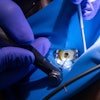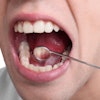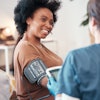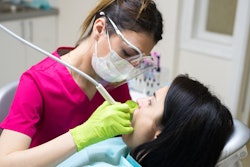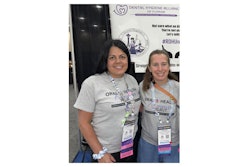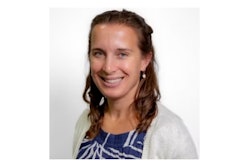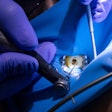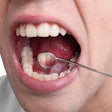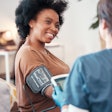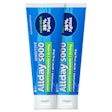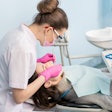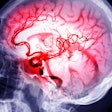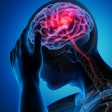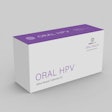Author's note: The following is an interview with Marvelyn Navarro, RDH, a registered dental hygienist who has more than 15 years of clinical and administrative experience in dentistry. Her passions lie in preventive care, periodontal therapy, and addressing airway issues to improve patients' overall quality of life. She is deeply committed to educating her patients on the oral-systemic link and empowering them to take control of their health.
Navarro is a key opinion leader and national speaker, sharing her expertise through lectures, training, and digital content creation. As the co-founder of Perio Precise, she provides specialized periodontal endoscopy treatment in partnership with dentists and offers advanced training for fellow dental hygienists nationwide.
Beyond her clinical and entrepreneurial work, Navarro proudly serves as the president-elect of the Nevada Dental Hygienists' Association, where she advocates for the profession and helps shape the future of dental hygiene through leadership, mentorship, and community involvement.
Tracee Dahm: What initially drew you to integrate endoscopy into your hygiene practice, and how did you begin training with it?
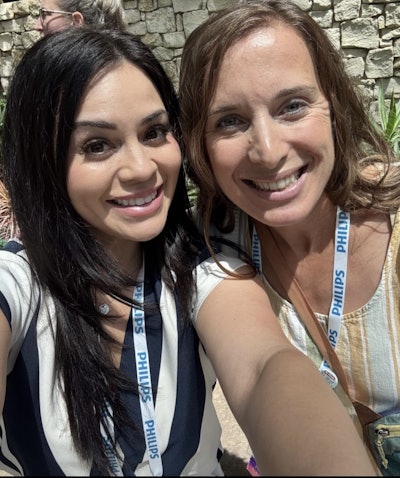 Marvelyn Navarro, RDH (left), and Tracee Dahm, MS, RDH.Tracee Dahm, MS, RDH.
Marvelyn Navarro, RDH (left), and Tracee Dahm, MS, RDH.Tracee Dahm, MS, RDH.
Marvelyn Navarro: What initially drew me to dental endoscopy in hygiene practice was a mentor in Las Vegas, Peggy Chesser, who was one of the first endoscope users in the country. She worked in the office where I was at the front desk.
I saw how passionate she was about it. The doctors and patients would rave about the results. It was less costly than flap surgery and gave a nonsurgical, minimally invasive approach.
Peggy also mentored me through dental hygiene school. During dental hygiene school, in my table clinic presentation, I chose dental endoscopes, which earned me first place, and I was able to compete nationally at the American Dental Hygienists' Association. I knew it was something I wanted to do after dental hygiene school. After graduation, Peggy took me under her wing. I worked with her in an office, and she trained me in endoscopy.
Q: Can you walk us through a typical appointment where you use the endoscope? What does the workflow look like from start to finish?
A: As a mobile RDH, I own my own dental endoscopes. I partner with dental offices and treat their patients in-house through the company I own and co-founded, Perio Precise.
A typical day for me involves packing all my supplies into my car. I then head to the office, unload, and arrive about 30 minutes before the appointment to set up the unit. It is a unit that needs to be assembled and broken down as a travel RDH.
I then set up all my insert tips: triple bends, straights, lefts, and rights. I have them all because one insert does not reach or adapt well in all areas, such as in cases of deep pocketing and concavities. Additionally, I refrain from using hand instrumentation and use ultrasonics exclusively.
I usually do half the mouth at a time, so I do not perform local anesthesia on the entire mouth at once. I will finish upper right/lower right and then move to upper left/lower left. Once I complete the visual scaling and root planing, I then take my full-mouth periodontal evaluation posttreatment to get an accurate pocket depth. I then review videos, oral hygiene instructions, and postoperative instructions with the patient and schedule their follow-up recare. Then my breakdown occurs.
Q: How has visualizing subgingival areas in real time changed your clinical decision-making or patient education strategies?
A: Having the ability to visualize subgingivally has changed the way I approach instrumentation and clinical decision-making. It has even changed the way I approach my assessments, from thorough probing of furcations, bleeding on probing, and bone loss on radiographs to a review of anatomy. I think it finally all clicks.
You realize that we often miss calculus, and now we can visualize it and identify how it tends to hide in hard-to-reach areas. You can also clearly see how your instruments adapt to a root surface and how you must move the instrument to remove the calculus and debride the root surface. I always like to say you must get acrobatic with it, something that was not taught in dental hygiene school.
I also now use all my instruments, and not one instrument fits all. The same goes for patient education. You can also take real-time videos during the patient care on the newer unit, so periodontal disease becomes more real to the patient.
They say things like, "I had barnacles under there?!" When they see what is truly causing the disease in real time, there is more motivation to incorporate home care and understand its importance.
Q: What challenges did you face when first learning to use the endoscope, and how did you overcome them?
A: Learning a new skill is a fun but always challenging task. During endoscopy, you use two hands: the endoscope camera in your left hand and the ultrasonic device in your right hand. You also have two feet operating simultaneously, one to control the ultrasonic device and the other to control the water flow of the endoscope camera. You are doing this all simultaneously while looking at the screen and not your patient's mouth. This takes indirect vision to a whole other level.
It is hard, and you often leave mentally and physically exhausted when you get started. There were days when I wanted to run and yell and run for the hills. However, I stuck to it, and I took it as a video game I had to beat. Now, almost 10 years later, I am loving every moment of my endoscopic journey and the countless teeth I have saved, along with those of my patients. I have helped, and the results are rewarding and mind-blowing.
Q: Have you noticed any shifts in patient outcomes or compliance since incorporating endoscopic visualization into your care?
A: Yes, I have seen various outcomes in improving the periodontal state of our patients and stabilizing their diseased state. The patients, in turn, are also happy that they are seeing less to no bleeding at home when incorporating their home care regimen. They are just as excited to hear their pockets are shallower and the disease is becoming inactive.
As the research suggests, when thorough and precise debridement occurs, you allow the tissue to heal by removing the invader that causes the inflammatory process. In other cases, we have worked with the dentist to place biologic materials to promote the regeneration of lost or damaged periodontal tissues, such as bone and the periodontal ligament. With this approach, we have also seen great bone healing and reattachment results nonsurgically within nine months.
Q: How do you tailor your communication when showing patients live footage of their periodontal status, especially those who may be anxious or skeptical about it?
A: I enjoy showing patients footage of the calculus that was hiding beneath their gingiva and on their root surface. I love seeing the faces they make. They are often in utter disbelief that something like that was in there.
I can then educate them on the bacterial biofilm process, which starts as invisible and, if not disturbed, will continuously build up and calcify. I can also educate them as to why their tissue bleeds or why there is halitosis with perio breath.
I think when we do our best to inform the patient chairside and let them know they have a cavity on an x-ray and so forth, it's hard for them even to grasp what they are looking at on a radiograph. Or when we take probe depths, they think we may be poking extra hard to make a profit. However, when they see their own calculus, the skepticism disappears. It's a real disease present.
We have many anxious patients who tend to read too much on Google before their appointment and psych themselves out. However, when we perform the procedure, they are pleasantly surprised by how easy it was and that they can resume their usual activities quickly after.
Q: In what ways has endoscopic practice influenced your collaboration with referring to periodontists?
A: We work closely with periodontists, and they absolutely love the integration of endoscopy into care. The biggest reason is that it dramatically reduces the need for full-mouth flap surgery. Patients now have a minimally invasive, nonsurgical, and more cost-effective option.
With subgingival vision, we can clearly see and document what's happening. This not only improves communication with general practitioners and periodontists but also provides robust video documentation to support insurance claims -- a significant benefit, given the frequency of denials.
For general practitioners who refer to us, it means that more early to moderate periodontal cases can be treated in-house while we still carefully evaluate advanced cases. When appropriate, we make recommendations for referral or suggest a localized surgical approach instead of full-mouth surgery.
Ultimately, endoscopy shifts care toward more targeted, conservative treatments, decreasing the need for full-mouth flaps and allowing for more collaborative, patient-centered decision-making.
Q: What advice would you give to hygienists considering endoscopic training, both technically and professionally?
A: I would say don't give up, no matter how hard it gets or how frustrated you are. Stick with it. It will take your instrumentation skills and knowledge to the next level. Give yourself grace and patience. This is like dental hygiene school all over again.
You will gain so much professionally in learning a skill that less than 1% of the entire U.S. knows how to do. With the increasing adoption of minimally invasive approaches in medicine and dentistry, this demand is expected to rise soon. This should be the standard of care in every single appointment, not just periodontal disease, but let's prevent it with subgingival vision.
Q: How do you balance the precision and time demands of endoscopic procedures with the flow of a busy hygiene schedule?
A: When I worked in the private practice setting, we would try to block out four-hour blocks throughout the schedule to incorporate our patients. That way, we had enough time to provide thorough, precise, and meticulous care. Or, since most of us clinicians work four-day workweeks, we would also come in on an additional day to incorporate a half day for the patients.
I would highly recommend setting aside the time, even if it does not take the entire four hours. You have enough time to be thorough and incorporate a full-mouth anesthetic.
Q: How do you see endoscopy shaping the future of preventive oral care, especially in underserved or high-risk populations?
A: What I envision is a new, more compact endoscope being released, hopefully soon, that can be almost as large as an iPad. Additionally, I expect a smaller, portable unit that can be used from one operation to the next and taken on the go at a fraction of the cost.
I would love this to be accessible to all clinicians. This would greatly help bring access to care to underserved, high-risk populations and facilitate mobile dentistry. We can provide a nonsurgical approach to all patients.
By the way, if there is any company that can help me make this happen, please get in touch with me. I would love to use this in our everyday practice, because not only is it great for periodontal disease, it also helps us with diagnostics such as radiographs, tactile sensation, and cone-beam computed tomography, which can help us eliminate the guesswork. We continuously find fractures, gutta-percha exposure, and undetected decay. It would add value to any office and patient.
Q: Any plugs you want to add?
A: Let's stop treating our patients blindly when we can have subgingival superpowers right at our fingertips. Let's make this the standard of care. Let's do our best.
Tracee S. Dahm, MS, RDH, is an adjunct clinical instructor for the North Idaho College School of Dental Hygiene in Coeur d’Alene, ID. She also works in private practice. Dahm has published articles in several dental journals, magazines, and a textbook. Her research interests include trends in dental hygiene and improving access to dental care for the underserved. She can be reached at [email protected].
The comments and observations expressed herein do not necessarily reflect the opinions of DrBicuspid.com, nor should they be construed as an endorsement or admonishment of any particular idea, vendor, or organization.
